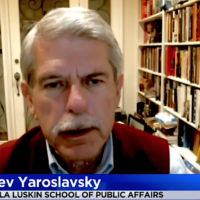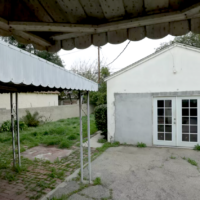Tackling Voter Dilution in California UCLA Voting Rights Project fights to ensure equitable representation in Orange and Yolo counties
By Jose Garcia
As counties across California finalize new electoral boundaries in a once-in-a-decade process known as redistricting, the UCLA Voting Rights Project (VRP) is successfully providing guidance to decision-makers to ensure full compliance with federal and state laws.
California has experienced rapid demographic changes, such as Latinos becoming the largest ethnic majority in the state, and county boards get one shot to draw fair and equitable district maps for the next decade. In the past, California has seen patterns of voter dilution that many wish to see corrected.
The Voting Rights Project, the flagship project of the UCLA Latino Policy and Politics Initiative (LPPI), is placing direct pressure on decision-makers through high-level analysis of district maps and leveraging of local media, with the goal of ensuring that equitably drawn maps are implemented.
In Orange County, a region that is 34% Latino, the county Board of Supervisors has not seen Latino representation in over 15 years. This is largely attributed to the way district boundaries have been drawn in the past.
In response, the Voting Rights Project published a report analyzing proposed maps for the county’s supervisorial districts and detailed the steps needed to ensure full compliance with the federal Voting Rights Act.
“Several of the proposed maps, while appearing to be compliant, did not actually meet requirements to give areas with a high percentage of people of color a chance of electing a representative from their community,” said Sonni Waknin, voting rights counsel for the VRP.
Some of the proposed maps ensured that Latinos were less able to elect candidates of their choice by “cracking,” or splitting, adjacent cities with ethnic majorities, such as Santa Ana and Anaheim, according to Sonja Diaz, founding director of the UCLA Latino Policy and Politics Initiative.
The Voting Rights Project urged the Orange County Board of Supervisors to implement specific boundary changes that would create the county’s first majority-Latino supervisorial district — which the board subsequently adopted in a historic vote.
“We are incredibly proud to have ensured that Orange County recognized the need for Latinos to elect candidates of their choice, as required by the federal Voting Rights Act,” Waknin said.
Her team harnessed the success in Orange County and began deploying similar strategies across the state throughout the fall of 2021.
Yolo County, a region at high risk of voter dilution under proposed district boundaries, was a priority. While voters had been able to elect a Latino candidate under existing maps, the margin of victory was narrow, considering that Latinos accounted for 69% of the county’s total population growth over the last 10 years.
As it did in Orange County, Waknin’s team analyzed proposed maps and demographics in Yolo County and found that several plans under consideration would crack the Latino population of existing districts and lower the Latino voting-age population below thresholds required by the Voting Rights Act.
A VRP memo sent to the Yolo County Board of Supervisors argued that three of the four originally proposed maps would absolutely dilute the power of Latino voters. Following the memo and a coordinated media strategy, the supervisors unanimously voted to adopt district borders closely resembling the VRP’s recommendations.
“Latino communities have driven the growth of California for the past decade,” Waknin said. “Their political voice must be heard at every level, including local governments.”
At the local level, cities and counties use new census data to redraw district lines to reflect changes in their populations. California’s congressional districts are redrawn every decade by an independent commission of citizens from across the state.
Currently, over half of the U.S. has finished the redistricting process, and many of the approved maps will ultimately undercut communities of color, according to Waknin. Her team is continuing its involvement in places facing potential voter dilution outside of California, including in key states such as Texas and Washington.
“Through this work, the UCLA Voting Rights Project is playing a critical role in protecting the integrity of the state’s and nation’s democracy,” Diaz said. “The project is fundamentally influencing how political boundaries are redrawn to create an equitable electoral system for all.”










Leave a Reply
Want to join the discussion?Feel free to contribute!